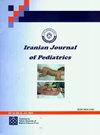发热门诊儿童预检分诊在传染病防控中的应用
IF 0.4
4区 医学
Q4 PEDIATRICS
引用次数: 0
摘要
背景:2019冠状病毒病(COVID-19)的全球传播已达到大流行的程度。控制其传播的努力包括在一些国家和地区制定了一系列早期筛查和分类措施。目的:本研究旨在确定如何优先考虑儿科发烧患者,以限制他们等待会诊的时间,从而减少在COVID-19负担下病情恶化和危机的可能性。方法:对2019 - 2020年浙江大学医学院附属儿童医院发热门诊儿童分诊及急诊流程进行流程图、引导标志、宣传品、中午及夜间发音、急诊呼叫等分析。为加强会诊前和分诊管理,统计不良事件伤害发生率,并进行满意度调查。传染病流行以人口统计学和季节性因素为特征,组间差异采用卡方检验。结果:2019年1月至2020年12月,每年出现4个发病高峰期,分别为2019年2月、7月、9月、12月和2020年3月、6月、9月、12月。常见呼吸道病毒感染有季节性高峰;差异有统计学意义(χ2 = 52.17;P & lt;0.001),在需要紧急护理的患者中,继发于发烧。1 ~ 3岁的患者比其他年龄组更需要急诊治疗(54.70%;99/181)。需要急诊治疗的最常见疾病是热性惊厥(55.2%)。研究期间无传染病漏报或少报,无医务人员感染。结论:有效的会诊前评估和分诊管理制度和简化的工作流程对保护急性患者,预防传染病具有重要意义。本文章由计算机程序翻译,如有差异,请以英文原文为准。
Application of a Pre-examination and Triage of Children in Fever Clinics to Prevent and Control the Epidemic of Infectious Diseases
Background: The global spread of coronavirus disease 2019 (COVID-19) has reached pandemic proportions. Attempts to control its spread have included a range of early screening and triage measures developed in several nations and areas. Objectives: This study aimed to determine how to prioritize pediatric fever patients to limit the time they had to wait for a consultation and, therefore, the potential of worsening and crises under the burden of COVID-19. Methods: The triage and emergency care process of children in the Fever Clinic of Children’s Hospital of Zhejiang University School of Medicine, Zhejiang, China, within 2019 - 2020 included flow charts, guidance signs, publicity materials, noon and night articulation, and emergency calls. To enhance the management of pre-consultation and triage, the incidence of adverse event injuries was tallied, and satisfaction surveys were conducted. The prevalence of infectious diseases was characterized by demographic and seasonal factors, and the chi-square test was employed to test for differences between groups. Results: From January 2019 to December 2020, four peak periods were observed in each year, namely February, July, September, and December in 2019 and March, June, September, and December in 2020. The peak of common respiratory virus infection was seasonal; however, a significant increase (χ2 = 52.17; P < 0.001) in the case of patients who needed emergency care was observed secondary to fever. The patients within the age range of 1 - 3 years were more in need of emergency care than any other age group (54.70%; 99/181). The most common disease requiring emergency care was febrile convulsions (55.2%). No infectious diseases were missed or underreported during the study period, and no medical personnel was infected. Conclusions: An effective pre-consultation assessment and triage management system and streamlined workflow are of great importance in safeguarding acute patients while preventing infectious diseases.
求助全文
通过发布文献求助,成功后即可免费获取论文全文。
去求助
来源期刊
CiteScore
0.90
自引率
20.00%
发文量
75
审稿时长
6-12 weeks
期刊介绍:
Iranian Journal of Pediatrics (Iran J Pediatr) is a peer-reviewed medical publication. The purpose of Iran J Pediatr is to increase knowledge, stimulate research in all fields of Pediatrics, and promote better management of pediatric patients. To achieve the goals, the journal publishes basic, biomedical, and clinical investigations on prevalent diseases relevant to pediatrics. The acceptance criteria for all papers are the quality and originality of the research and their significance to our readership. Except where otherwise stated, manuscripts are peer-reviewed by minimum three anonymous reviewers. The Editorial Board reserves the right to refuse any material for publication and advises that authors should retain copies of submitted manuscripts and correspondence as the material cannot be returned. Final acceptance or rejection rests with the Editors.

 求助内容:
求助内容: 应助结果提醒方式:
应助结果提醒方式:


